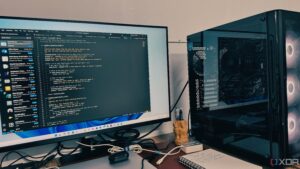
URGENT UPDATE: Three leading CEOs in the driverless technology sector are shaking up conventional wisdom about autonomous vehicles. Don Burnette, Raquel Urtasun, and Dave Ferguson recently shared their insights on the future of self-driving tech, highlighting key challenges and breakthroughs that could redefine the industry.
As the autonomous driving conversation intensifies, these leaders collectively bring nearly five decades of experience to the table. Burnette, CEO of Kodiak, currently operates eight driverless trucks in the Permian Basin, transporting essential materials for hydraulic fracking. Urtasun’s Waabi aims to deploy fully autonomous trucks by the end of this year through a partnership with Volvo. Meanwhile, Ferguson’s Nuro is gearing up for a competitive launch of robotaxis with Uber in 2026.
During their discussions, these CEOs challenged several long-held assumptions about autonomy, emphasizing that the technology’s readiness is no longer in question. “Everyone focuses on the technology,” Burnette stated. “But we’re really past the point where the technology is the question mark. Now, the question is path to profitability and scale.”
Despite advancements, challenges remain, especially concerning weather conditions. Ferguson pointed out that while scaling driverless cars to handle snow is a hurdle, they are confident in overcoming it.
In a surprising twist, Urtasun criticized the common industry benchmark of “miles driven” as a metric of safety and advancement. “It has nothing to do with the advancements of the technology,” she argued, stressing that the number of miles driven only reflects how long a company has been in the game. With a fatality rate for large truck drivers at 1.3 per 100 million miles, she noted that there have been no fatalities involving autonomous trucks, indicating a need for more substantial data.
The discussion also touched on the significant leap from supervised driving to full autonomy. Ferguson elaborated, stating that even with advanced assisted-driving technologies, achieving Level 4 autonomy—where no driver is needed—remains a monumental challenge. “It took around half a decade to get the first driverless mile,” he recalled, highlighting the rigorous testing required for safety.
Additionally, the ongoing debate regarding sensor technology—specifically lidar versus cameras—was described by the CEOs as a distraction. Ferguson emphasized the importance of cost-effectiveness and safety, stating, “If it’s going to increase the safety of that system significantly, why would you not do that?” Urtasun, who initially supported a cameras-only approach, shifted her stance after recognizing the safety benefits of integrating lidar into autonomous systems.
Burnette echoed this sentiment, calling the lidar-camera debate a “huge distraction” from the pressing questions of economic viability and customer demand. “Ultimately, the sensor suite will evolve over time,” he added, suggesting that the focus should shift to practical implementation rather than theoretical debates.
The insights shared by these industry leaders underscore a pivotal moment in the autonomous driving landscape. As companies like Kodiak, Waabi, and Nuro push forward, the implications for transportation, safety, and the economy are profound. The road ahead is not without hurdles, but the momentum in driverless technology is undeniable.
Stay tuned for updates as these developments continue to unfold. The future of autonomous driving is rapidly approaching, and its impact will be felt far and wide.







